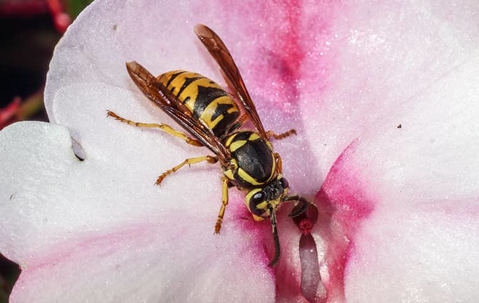The fall brings about many wonderful things – a change in leaf colors, crisp cool mornings, and the kids back in school. Unfortunately, pests like yellow jackets have to ruin some of this good time! Unlike other pests that stay away unless you bother them, yellow jackets invade your space. You could be sitting outdoors or playing with your kids at the park and be stung.
Why Are There So Many Yellow Jackets In The Fall?
Yellow jackets are most common in the fall because their nests grow throughout the summer. One nest can house up to 4,000 yellow jackets! The nest is also going through changes at this point. The queen is dying and the colony is declining in preparation for the winter. Yellow jackets are not able to survive the cold temperatures. Instead, they prepare for next summer by producing potential queens and kings.
Yellow jackets feed off larvae in the summer, which is why you don’t see them hanging around outdoor spaces as much. They have food and are generally well-fed, which makes them happy. In the fall, the space is much more competitive. Yellow jackets are fighting amongst themselves and foraging for food, so they are more aggressive.
How To Keep Yellow Jackets Away
Fortunately, there are things you can do to cut down on yellow jacket populations, at least around your home. Remember, yellow jackets are foraging for food, so keeping food out of sight is key:
- Clean up food after barbecuing, including beverage spills and meat juices.
- If you’re outdoors eating or grilling, use a fan to create a breeze.
- Pick up and discard any fallen fruits/vegetables from your trees or garden.
- Keep cans, juice boxes, sippy cups, etc. indoors.
- Do not let pet food sit outdoors.
- Keep a tight lid on garbage and recycling cans.
How To Avoid Getting Stung
In addition to keeping food away, it’s important to know that yellow jackets are attracted to dark colors, human sweat, and the heavy use of perfumes, deodorants, and hairsprays. If you know that you’ll be outdoors for an extended period of time, choose lighter colors and avoid using a lot of pleasant-smelling products. Yellow jackets are around enough – you don’t want to call attention to yourself!
If you do come into contact with a yellow jacket, play your cards safely. If you swat at the bee or squash its venom sac, it will send an alarm signal to its group, and they will come to defend their friend. To avoid having a swarm of yellow jackets coming after you, follow our tips above and know how to respond to a yellow jacket. If one lands on you, don’t freak out. Move slowly and gently brush it away. If you are stung, apply ice and take an antihistamine to prevent swelling.
If you have a noticeable number of yellow jackets in your yard, call Heritage Pest Control. We’ll come out and take a look, identify potential nests, and address the problem. It’s not worth getting stung!

